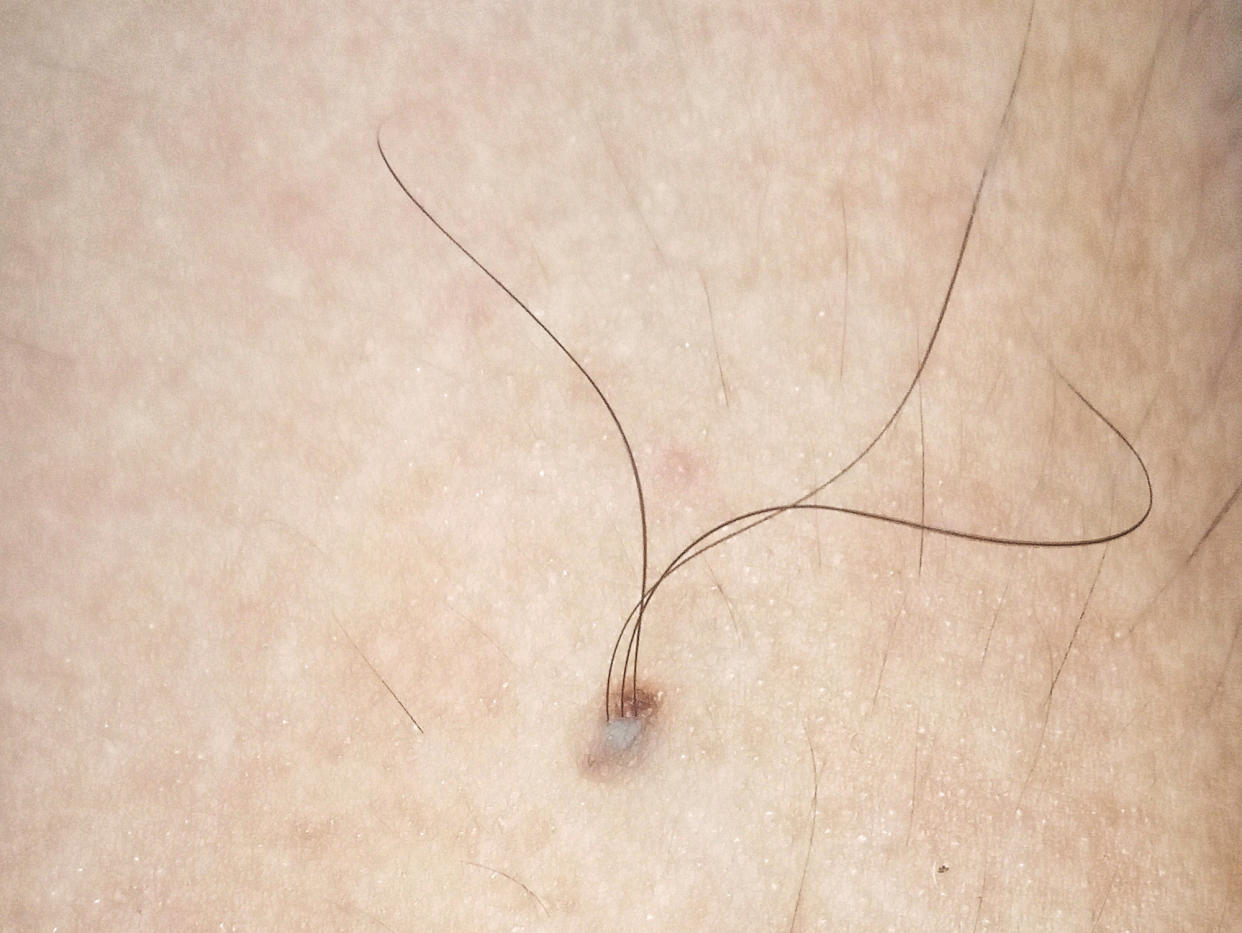Unsightly skin moles may offer a possible avenue to treat hair loss, according to a study published this week in the journal Nature.
For nearly a decade, scientists at the University of California, Irvine have been studying skin moles to understand why they produce such long hairs. Their new paper shows that such moles contain particular molecules that promote hair growth.
"Nature gave us clues in those hairy skin moles," said Maksim Plikus, the study's lead author and a professor of developmental and cell biology at UC, Irvine.

People normally shed between 50 and 100 hairs per day, then generate new hair from the stem cells in hair follicles. But in individuals with baldness or pattern baldness — what doctors call alopecia or androgenic alopecia — the stem cells lie dormant, so new hair can’t grow.
In experiments involving mice, Plikus and his research team demonstrated that a molecule called osteopontin, which is especially prominent in hairy skin moles, could activate hair follicle stem cells that were previously dormant.
The researchers tested this by grafting human skin samples onto mice, then giving the animals three injections of the molecule, spaced one day apart. Within days, the injections helped the mice grow new hairs that are around 1 centimeter long.
To verify that the osteopontin was responsible for the hair growth, the researchers also injected a neutral protein in a different spot on the skin, but that injection site did not sprout new hair.
Plikus said that unlike studies that focus on mouse fur, his findings are more applicable to humans because the experiment used human skin samples and tested a molecule found in human moles.
"The mechanism that they identify in mice seemed to be applicable to understand hair follicle growth in humans. That is a remarkable part of the study," said Mayumi Ito, a professor of dermatology and cell biology at NYU Langone Health, who wasn't involved in the research.
Plikus hopes that his research could eventually lead to an outpatient procedure to promote hair growth — perhaps performed in a dermatologist’s office, similar to a cosmetic procedure like Botox. The molecule would take the form of a gel and get injected or administered through a process called microneedling, which rolls tiny needles over the skin, he said.
In theory, Plikus said, people could then see their natural hair grow back as it was before they experienced baldness.
"Your pre-existing dormant hair follicles will awaken and they will start growing again," Plikus said. "Once they start growing, they will naturally produce hair that has qualities that you kind of remember when you were 18. It will be the same thickness, length. It will be straight or curly."
Plikus is the co-founder of Amplifica, a biotech company that is licensing his research and advancing it to clinical trials. Started in 2019, the company expects to begin its first human trial in the coming months to test the safety of a compound designed to deliver osteopontin to the body. The compound will be administered through injections in the scalp, according to Frank Fazio, CEO of Amplifica.
The company also plans to conduct a subsequent trial to evaluate the safety of a synthetic version of osteopontin.
"We will certainly be studying throughout our clinical program both men and women," Fazio said.
'We have treatments, but we don’t have solutions'
The Food and Drug Administration has approved two treatments for hair loss: the drugs commonly sold under the brand names Propecia and Rogaine. Propecia is a prescription pill, while Rogaine is a liquid or foam applied directly to the skin.
Both were approved decades ago, though Propecia isn’t approved for use in women. And both have side effects: Rogaine can cause skin irritation or unwanted facial hair, and Propecia can lead to erectile dysfunction or reduced sexual desire.
Neither drug is fully effective at restoring hair loss.
"We have treatments, but we don’t have solutions," said Dr. Jeremy Green, a board-certified dermatologist in Miami and consultant for Amplifica.
In his practice, Green said, he commonly sees women in their 30s and 40s whose hair is thinning and men in their late teens or early 20s with receding hairlines.
"It'll be college guys that are coming in saying, 'Oh God, what's happening? I don't want to look like my dad,'" he said.
Green said he often prescribes topical treatments like Rogaine first, then — depending on the results or the patient’s preference — moves to Propecia or its generic forms. From there, he said, the options get more invasive and include hair transplants or a method called platelet-rich plasma therapy, which injects blood cells into the scalp.
Hair transplants are highly effective, Green said, but can be expensive and require a full-day procedure.
"I wouldn't say it's a slam dunk for everyone, and that's why you still see people walking around with alopecia," he said.
The molecular injection Amplifica is developing, Green noted, may not work for hair loss caused by medical conditions such as thyroid disorders. Still, he's hopeful that the injection could benefit many patients with balding or thinning hair.
"Patients are willing to fly over half the planet to get hair transplants and do other things, so the demand is certainly high," he said.
Health - Latest - Google News
June 24, 2023 at 06:00PM
https://ift.tt/n495gND
Skin moles that grow hair may offer a treatment for baldness, a study in mice suggests - AOL
Health - Latest - Google News
https://ift.tt/vsqau9n
Bagikan Berita Ini














0 Response to "Skin moles that grow hair may offer a treatment for baldness a study in mice suggests - AOL"
Post a Comment